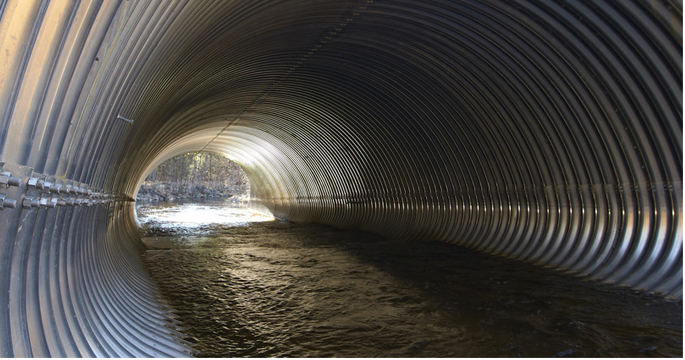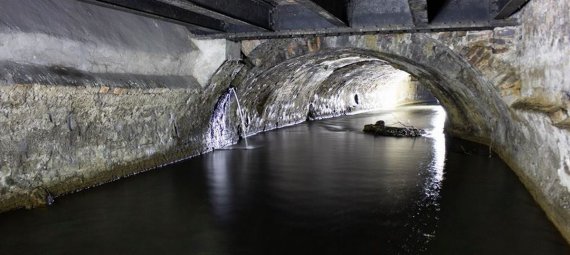About the Project
Supervisors: Prof Paul Kemp, Dr Andrew Vowles
Project Rationale
Light plays a governing role in the life of most freshwater fish, influencing behaviours such as time of peak activity, foraging, predator avoidance, collective movement and migration. These behaviours are intrinsically linked to daily light cycles, exposure to which is of significant ecological importance. However, anthropogenic activity is increasingly impacting natural light regimes. Artificial light at night (e.g. from streetlights, domestic buildings, industry and bridges) generates unnatural levels of illumination in aquatic environments when it should be dark1, and a high density of engineered river infrastructure (e.g. culverts that divert rivers under rail or road crossings) 2 limits natural light penetration, creating patches of darkness during the day. In both instances abrupt, unnatural transitions in illumination are created over large spatial scales, with potential to influence behaviours of ecological importance for fish. Despite this, current evidence on the behavioural response of fish to light, and especially abrupt light transitions, is limited. Such information is needed so impacts of anthropogenic alterations to natural light regimes can be understood and mitigated. This is of importance because human activity has resulted in freshwater ecosystems being the most degraded of all environments, and consequently, freshwater fish are one of the most threatened taxonomic groups on the planet.

Methodology
This project, conducted in collaboration with the JBA Trust, JBA Consulting and the Environment Agency, will adopt an experimental approach to investigate how artificial illumination influences freshwater fish behaviour. Working as part of an interdisciplinary team of fish biologists and engineers, the successful candidate will develop a series of experiments that will use large-scale experimental facilities (flumes and tanks) in addition to field validation. Experiments will quantify fish behaviour relative to the characteristics of light (e.g. absolute intensity, relative intensity between zones and spectral composition) and the type of light transition (i.e. from illuminated to dark, and visa-versa). They will develop skills in experimental design, behavioural monitoring using fine-resolution filming techniques and video tracking of fish movements, field telemetry, various analytical techniques using Matlab and R, and technical writing capabilities. Outputs from this project will improve our fundamental understanding of animal behaviour in response to light and provide valuable information that will aid freshwater fish conservation.
Training
The INSPIRE DTP programme provides comprehensive personal and professional development training alongside extensive opportunities for students to expand their multi-disciplinary outlook through interactions with a wide network of academic, research and industrial/policy partners. The student will be registered at the University of Southampton and hosted at International Centre for Ecohydraulics Research (Faculty of Engineering and Physical Sciences). Specific training will be provided in:
– The use of large ecohydraulic flumes
– Videography techniques for monitoring fish behaviour
– Use of light measurement equipment (light sensors / spectrometers)
– Fish handling and husbandry
– Ethics associated with the use of animals in scientific research
– Data analysis
– Technical writing
There will be placement opportunities at JBA and EA to work alongside industry specialists, who will support the student, help to facilitate access to relevant data, software, and technical guidance, and provide insights about the applied context for the research.
Funding Notes
Please see View Website for details.
To be considered for this project you MUST submit a formal online application form – full details on how to apply can be found here View Website
References
1 Jachow, A. & Hölker, F. (2019). How dark is a river? Artificial light at night in aquatic systems and the need for comprehensive night-time light measurements. WIREs Water, e1388
2 Belleti, B., Garcia de Leaniz, C., Jones, J. et al. (2020). More than one million barriers fragment Europe’s rivers. Nature, 558, 436-441.

